 |
| James Baldwin (Associated Press) |
--James Baldwin (born on August 2, 1924), from "James Baldwin: The Art of Fiction, No. 78," interviewed by Jordan Elgrably, The Paris Review, Issue 91, Spring 1984.
 |
| James Baldwin (Associated Press) |
The title poem of Further Adventures, written in 15 sections that alternate between poetry and prose, addresses issues central to Yau’s work: his insistence that “painting is not dead,” the materiality of paint and language, language’s plasticity. He takes on the voice of Yves Klein throughout the poem’s 15 sections, and also speaks to Klein’s own writing about painting in 1954, and engages with Baudelaire, Mallarme, Dickinson, Rilke, Trakl, Whitman, Pollock, Warhol, and Johns, among others. The work is sometimes playful, as in the section titled “(Robert Desnos and Yves Klein meet in the sky),” but he’s pushed past what might be categorized as ekphrastic poetry or criticism, to create a form that combines the two. He speaks from or with the art, rather than “about” it. The penultimate section opens in the voice of Klein:
What I wanted from art was impossible. This is what every artist wants. If you settle for the possible, then your failure is ordinary, although, in a few cases, spectacular. I didn’t want what was there for the taking, the images of things that could be named. I didn’t want to add names to the vocabulary.
That’s part of it. In a way, what I learned from painters is that words could be treated as things, that you could put any one color next to any other color. And I thought, in poetry, you should technically be able to put any one word next to any other word. So, looking at painting made me look at language differently.
I’m interested in what language is capable of, and I am interested in collage without collaging. In other words, I do try to put one thing next to another — words, phrases — but I haven’t actually collaged. I haven’t taken it from one place and collaged it next to something from another place.
 |
| Yves Klein. Silence is Golden (1960). ADAGP, Paris. |
 |
| Yves Klein, photographed by Harry Shunk and Janos Kender. Leap into the Void (1960). Gelatin silver print. 25.9 x 20 cm. The Metropolitan Museum of Art. |
 |
| Alex Katz, "Frank O'Hara," cutout: oil on wood (double-sided), 1959, Robert Miller Gallery (via Artsy.net) |
WHY I AM NOT A PAINTER
by Frank O'Hara I am not a painter, I am a poet. Why? I think I would rather be a painter, but I am not. Well, for instance, Mike Goldberg is starting a painting. I drop in. "Sit down and have a drink" he says. I drink; we drink. I look up. "You have SARDINES in it." "Yes, it needed something there." "Oh." I go and the days go by and I drop in again. The painting is going on, and I go, and the days go by. I drop in. The painting is finished. "Where's SARDINES?" All that's left is just letters, "It was too much," Mike says. But me? One day I am thinking of a color: orange. I write a line about orange. Pretty soon it is a whole page of words, not lines. Then another page. There should be so much more, not of orange, of words, of how terrible orange is and life. Days go by. It is even in prose, I am a real poet. My poem is finished and I haven't mentioned orange yet. It's twelve poems, I call it ORANGES. And one day in a gallery I see Mike's painting, called SARDINES.
 |
 |
| Shin Yu Pai (Seattle Review of Books) |
LUNCH POEM
by Shin Yu Pai
(after Subodh Gupta)
6,000,000
to one: the delivery that
goes missing – a lunch pail that fails
to arrive @ its destination; domestic
articles bear homemade offerings produced
by housewives & dadi jis for their men-folk –
fleet-footed dabbawallas dispatch, carry,
& collect steel boxes by the thousands packed
lunch boys sport starched cotton nehru
caps pilot familiar passages – the son
of a railway guard solders stainless-steel
tiffin carriers a new class
of metalwork
 |
| Subodh Gupta. Untitled, 2008, Stainless steel, Houston Museum of Art. (Photo: Deena DeNaro-Bickerstaffe.) |
Takaezu treated life with a sense of wholesomeness and oneness with nature; everything she did was to improve and discover herself. She believed that ceramics involved self-revelation, once commenting, "In my life I see no difference between making pots, cooking and growing vegetables... there is need for me to work in clay... it gives me answers for my life."[5] When she developed her signature “closed form” after sealing her pots, she found her identity as an artist. The ceramic forms resembled human hearts and torsos, closed cylindrical forms, and huge spheres she called “moons.”The bell pictured below is an "open" ceramic forms, but its capacity for "self-revelation," and its connection to nature are both aspects that Pai discerns in her poem.
BELL(E) After Toshiko Takaezu in centuries past, sunk beneath soil to draw earth’s vital force, inert vessel of sound + light, conserved in a museum of curative plants the moment of stillness & gathering before the shudder of first sound dreaming the shake of chime hum & g o n g
 |
| Toshiko Takaezu. Bell (1997). Seattle’s Volunteer Park Conservatory. (Photo courtesy Myra/Flickr.) |
 |
| Lorna Dee Cervantes |
NIGHT MAGIC (BLUE JESTER) By Lorna Dee Cervantes After Federico García Lorca Blue that I love you Blue that I hate you Fat blue in the face Disgraced blue that I erase You lone blue Blue of an alien race Strong blue eternally graced Blue that I know you Blue that I choose you Crust blue Chunky blue Moon blue glows that despise You — idolize you Blue and the band disappears Blue of the single left dog Blue of the eminent red fog Blue that I glue you to me You again and again blue Blue blue of the helium Bubble of loveloss Blue of the whirlwind The blue being again Blue of the endless rain Blue that I paint you Blue that I knew you Blue of the blinking lights Blue of the landing at full tilt Blue of the wilt Flower of nightfall Blue of the shadow In yellowed windows Blue of the blown And broken glass Blue of the Blue Line Underlines in blue Blue of the ascending nude Blue before the blackness Of new blue of our winsome Bedlam Blue of the blue Bed alone: blue of the one Who looks on blue of what Remains of cement fall Blue of the vague crescent Ship sailing blue of the rainbow Of wait blue that I whore You — blue that I adore you Blue of the bluest door Blue my painted city In blue (it blew.)
 |
| Night Magic (Blue Jester), 1988, by Carlos Almaraz |
 |
| Kenneth Patchen in 1957 with a collection of his painted books, taken on the rooftop of photographer Harry Redl's apartment house in San Francisco. (Photo: Harry Redl, via FoundSF.com) |
free verse poems with whimsical imagery using pieces of Japanese paper and common construction paper, glue, tempera, watercolors, casein, crayons, ink, pencils, cloth dyes, cloth string, and coffee and tea (used as dyes). The idea for the painted poems, Patchen’s wife Miriam has said, emerged from his fascination with sheets he received from John Tate, a botanist. The sheets, once used in France to press botanical specimens, became the backdrop to the painted poems, which were bound and published in the collections Hallelujah Anyway and But Even So. Emitting both joy and grief, the painted poems depict the ways of the world—its cruelty included—with mature resignation and playful humor. His last work, Wonderings, contains reprints of his silkscreen pages along with abstract and figurative drawings. Patchen died in 1972, a year after Wonderings was published.
 |
| Shira Dentz |
POEM FOR MY MOTHER WHO WISHES SHE WERE
A LILYPAD IN A MONET PAINTING
by Shira Dentz
We’re in a gray tree (you and I). Lunging into an orange—not eating it. I’d like nothing better than to come to another kind of
arrangement;
mostly, though, we just don’t come apart.
’
Behold
a single contractual mark
to possess and to withhold (contractions),
and the dialogue within the dialogue that began before it.
Black seeds on a white dish
…………………………… (pores)
The sound of your voice has always been a fragment
organized as a flower,
a tin can cling-clanging upstream,
the spaces between my heartbeats
lengthening (like shadows);
You a part of the tough rubbery vine that expands on the
skin of the pond.
 |
| Robert Hayden |
MONET'S WATERLILIES by Robert Hayden Today as the news from Selma and Saigon poisons the air like fallout, I come again to see the serene, great picture that I love. Here space and time exist in light the eye like the eye of faith believes. The seen, the known dissolve in iridescence, become illusive flesh of light that was not, was, forever is. O light beheld as through refracting tears. Here is the aura of that world each of us has lost. Here is the shadow of its joy.
 |
 |
| Anne Carson |
Edward Hopper said that Nighthawks was inspired by “a restaurant on New York’s Greenwich Avenue where two streets meet,” but the image—with its carefully constructed composition and lack of narrative—has a timeless, universal quality that transcends its particular locale. One of the best-known images of twentieth-century art, the painting depicts an all-night diner in which three customers, all lost in their own thoughts, have congregated. Hopper’s understanding of the expressive possibilities of light playing on simplified shapes gives the painting its beauty. Fluorescent lights had just come into use in the early 1940s, and the all-night diner emits an eerie glow, like a beacon on the dark street corner. Hopper eliminated any reference to an entrance, and the viewer, drawn to the light, is shut out from the scene by a seamless wedge of glass. The four anonymous and uncommunicative night owls seem as separate and remote from the viewer as they are from one another. (The red-haired woman was actually modeled by the artist’s wife, Jo.) Hopper denied that he purposefully infused this or any other of his paintings with symbols of human isolation and urban emptiness, but he acknowledged that in Nighthawks “unconsciously, probably, I was painting the loneliness of a large city.”Jeremiah Moss, who started the Jeremiah's Vanishing New York blog, chronicling hyper-gentrification's dramatic transformation of New York City over the last two decades, and who last year published a companion volume, Vanishing New York: Now a Great City Lost Its Soul, devoted several posts back in summer 2010 and again in 2013 to figuring out which buildings in Manhattan might have served as a model for "Nighthawks." He concluded that there was no diner, and that Hopper had drawn more upon his imagination than anything else.
"NIGHTHAWKS," 1942
by Anne Carson
I wanted to run away with you tonight
but you are a difficult woman
the rules of you—
Past and future circle round us
now we know more now less
in the institute of shadows.
On the street black as widows
with nothing to confess
our distances found us
the rules of you—
so difficult a woman
I wanted to run away with you tonight.
Yet I say boldly that I know that if nothing passed
away, time past were not.
And if nothing were coming, time future were not.
And if nothing were, time present were not.
(Augustine, Confessions XI)
 |
| Mei-Mei Berssenbrugge (Kelsey Street Press) |
 This poem, however, explicitly explores the work of two poets Berssenbrugge knows, Kiki Smith (1954-), perhaps best known for her sculptures, figurines and prints, which have explored human bodies and our excreta, feminism, and the AIDS pandemic, among other themes, and Bruce Nauman (1941-), the conceptual artist whose work crosses a range of media, including the televisual.
This poem, however, explicitly explores the work of two poets Berssenbrugge knows, Kiki Smith (1954-), perhaps best known for her sculptures, figurines and prints, which have explored human bodies and our excreta, feminism, and the AIDS pandemic, among other themes, and Bruce Nauman (1941-), the conceptual artist whose work crosses a range of media, including the televisual.I LOVE ARTISTS by Mei-Mei Bersenbrugge 1. I go to her house and talk with her as she draws me or
knits, so it’s not one-on-one exactly, blue tattooed stars
on her feet. I pull the knitted garment over my head to my ankles. Even if a detail resists all significance or function,
it’s not useless, precisely. I describe what could happen, what a person probably or
possibly does in a situation. Nothing prevents what happens from according with
what’s probably, necessary. 2. Telling was engendered in my body and fell upon me,
like a battle skimming across combatants, a bird hovering. Beautiful friends stopped dressing; there was war. I’d weep, then suddenly feel joy and sing loud words
from another language, not knowing my song’s end. I saw through an event and its light shone through me. Before, indifference was: black nothingness, that
indeterminate animal in which everything is dissolved;
and white nothingness, calm surface of floating,
unconnected determinations. Imagine something, which distinguishes itself, yet
that from which it distinguishes does not distinguish
itself from it. Lightning distinguishes itself from black sky, but trails
behind, as if distinguishing itself from what espouses it. When ground rises to the surface, her form decomposes in
this mirror in which determination and the indeterminate
combine. Did you know, finally, there was not communication between
her and myself? Communication was in time and space that were coming anyway. I may suffer if I can’t tell the agony of a poisoned rat,
as if I were biting. 3. Bruce leaving for the night makes space for his cat to enter. Mouse (left) exits door and returns Moth and mouse on sculpture exit (left), noise. It’s an exterior relation, like a conducting wire,
light fragment by fragment. I realize my seeing is influenced by him, for example,
when we change form and become light reaching into corners
of the room. Even now, we’re slipping into shadows of possessions that
day by day absorb our energy. I left my camera on to map unfinished work with shimmering
paths of my cat (now disappeared), mice and moths (now dead). There’s space in a cat walking across the room, like pages
in a flip-book. The gaps create a reservoir in which I diffuse my embarrassment
at emotion for animals. I posted frames each week, then packed them into suitcases,
the white cat and her shadow, a black cat. I named her Watteau, who imbues with the transitory friendship
we saw as enduring space in a forest. 4. A level of meaning can be the same as a place. Then you move to your destination or person along that plane. Arriving doesn’t occur from one point to the next. It’s the difference in potential, a throw of dice, which
necessarily wins, since charm as of her handcrafted gift
affirms chance. I laugh when things coming together by chance seem planned. You move to abandon time brackets, water you slip into, what
could bring a sliding sound of the perimeter of a stone? You retain “early” and “walking” as him in space. When a man becomes an animal, with no resemblance between
them, it feels tender. When a story is disrupted by analyzing too much, elements
can be used by a witch’s need for disharmony. Creation is endless. Your need would be as if you were a white animal pulling
yourself into a tree in winter, and your tears draw a
line on the snow.
Mei-Mei Berssenbrugge, from I Love Artists: New and Selected
Poems, Berkeley: University of California Press, 2006.
 |
 |
| Carmen Giménez Smith |
DECOY GANG WAR VICTIM
For Harry Gamboa, Jr. Just a tick ago, the actor was a Roman candle shot to the sky, smudged by rain’s helter- skelter. His motivation was: he’s a stooge on L.A.’s sodden turnpike, so we have “to make” art. Got to rezone and react. The world the bare wall to his bullet. Got to rile up the populace, to fortify the arsenal. Once in a while, repopulate and penetrate, paint a list of incitement onto the walls. An elder told him that to overturn the city, one must surrender body/belongings to the one explosive spectacle of truth, making it ongoing. Pay attention. To overturn the city, not just the scraps but fervor itself. Not just the wan broadcast of indignation but IRL incursions into the workhouses and poorhouses to inflame the thousand points of light. A lean surge, departure pinks both ends of him. He’s the nth layer folded into the stand’s nerve.

SAN SEPOLCRO
by Jorie Graham
In this blue light
I can take you there,
snow having made me
a world of bone
seen through to. This
is my house,
my section of Etruscan
wall, my neighbor’s
lemontrees, and, just below
the lower church,
the airplane factory.
A rooster
crows all day from mist
outside the walls.
There’s milk on the air,
ice on the oily
lemonskins. How clean
the mind is,
holy grave. It is this girl
by Piero
della Francesca, unbuttoning
her blue dress,
her mantle of weather,
to go into
labor. Come, we can go in.
It is before
the birth of god. No one
has risen yet
to the museums, to the assembly
line--bodies
and wings--to the open air
market. This is
what the living do: go in.
It’s a long way.
And the dress keeps opening
from eternity
to privacy, quickening.
Inside, at the heart,
is tragedy, the present moment
forever stillborn,
but going in, each breath
is a button
coming undone, something terribly
nimble-fingered
finding all of the stops.
 |
| The Madonna del Parto by Piero della Francesca © Comune di Monterchi 2015 – Monterchi Museum |

 Punks by John Keene
Preorder your copy today! (Out in December 2021!)
Punks by John Keene
Preorder your copy today! (Out in December 2021!)
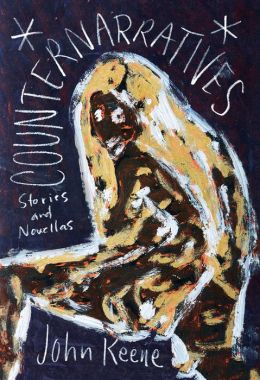 Counternarratives by John Keene
Back in stock, in paperback, so order your copy today!
Counternarratives by John Keene
Back in stock, in paperback, so order your copy today!
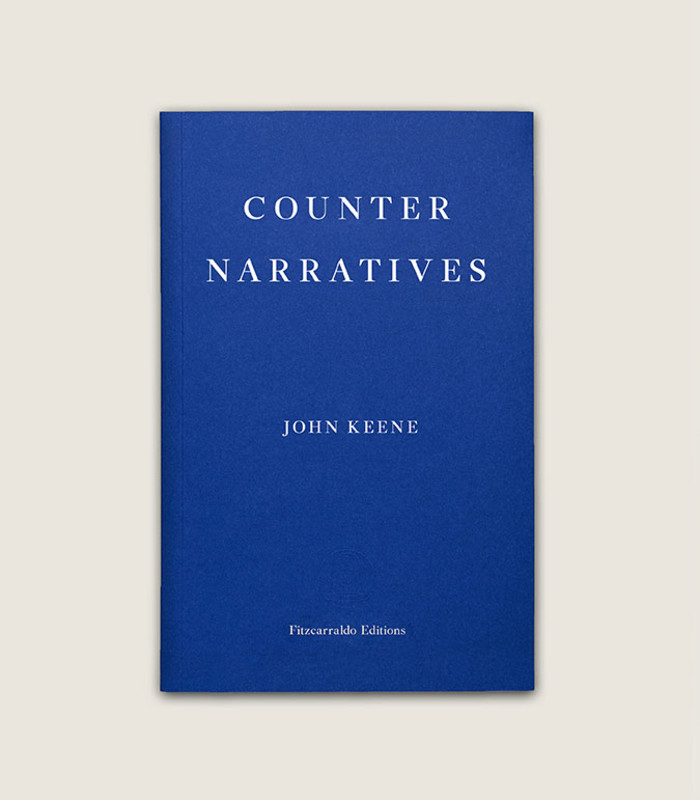 Counternarratives by John Keene (UK Edition)
Order your copy today!
Counternarratives by John Keene (UK Edition)
Order your copy today!
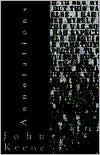 Annotations by John Keene
Get your copy today.
Annotations by John Keene
Get your copy today.
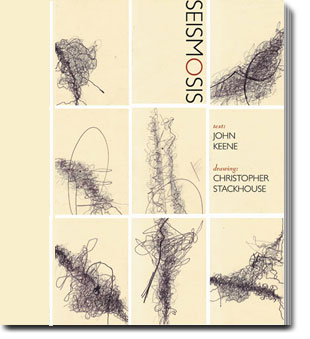 Seismosis by John Keene and Christopher Stackhouse
CURRENTLY OUT OF PRINT (STAY TUNED!)
Seismosis by John Keene and Christopher Stackhouse
CURRENTLY OUT OF PRINT (STAY TUNED!)
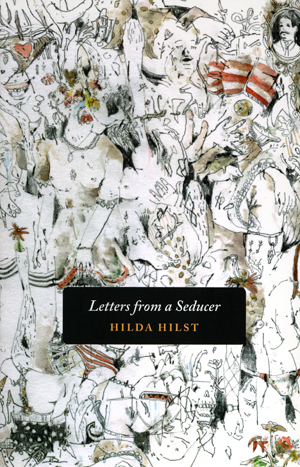 Letters from a Seducer by Hilda Hilst, translated by John Keene, with an introduction by Bruno Carvalho
Get your copy today!
Letters from a Seducer by Hilda Hilst, translated by John Keene, with an introduction by Bruno Carvalho
Get your copy today!
 The Obscene Madame D by Hilda Hilst, translated collaboratively by Nathanaël and Rachel Gontijo Araújo, with an introduction by John Keene
Get your copy today!
The Obscene Madame D by Hilda Hilst, translated collaboratively by Nathanaël and Rachel Gontijo Araújo, with an introduction by John Keene
Get your copy today!